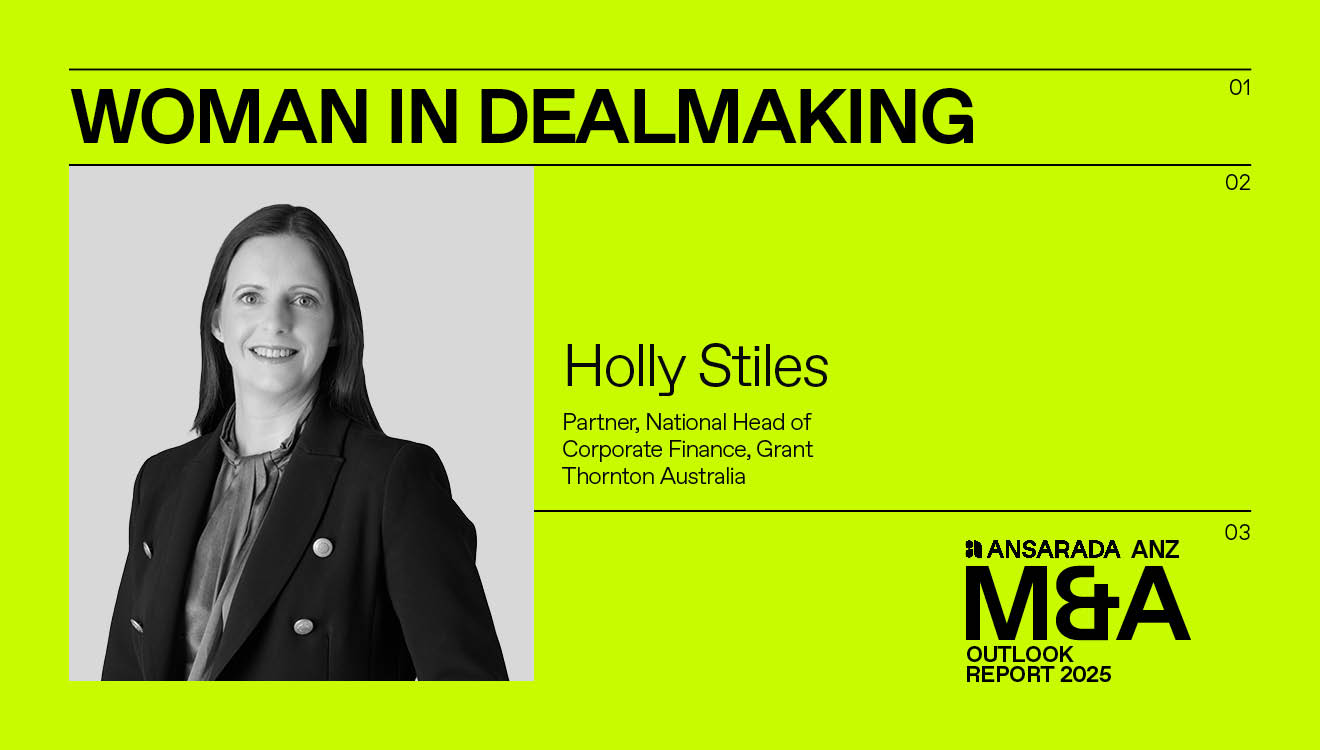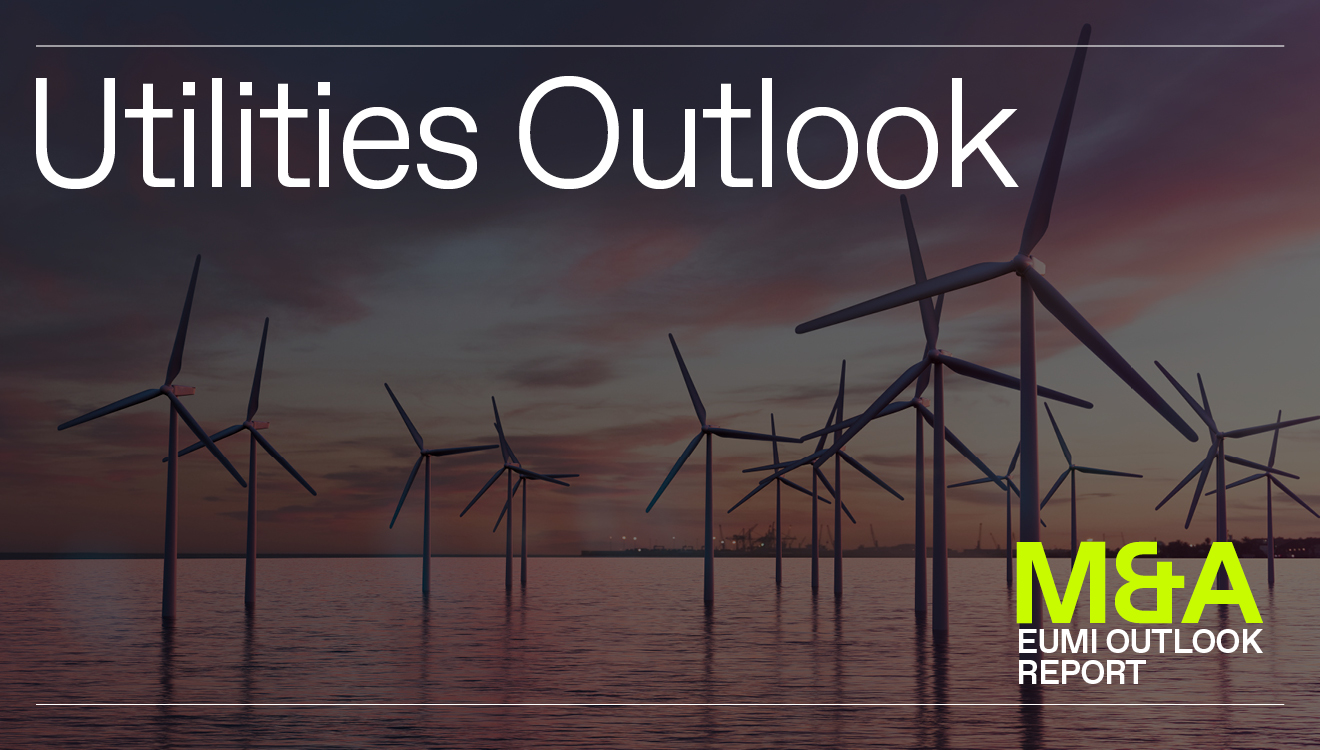Grant Thornton Australia’s Holly Stiles: Anticipating a surge in deal activity
Holly predicts a strong year for M&A in 2025, driven by pent-up demand and increased private equity activity.
By AnsaradaTue Apr 22 2025Mergers and acquisitions, Industry news and trends, Investors

A more promising M&A outlook is supported by a stabilising economic landscape, following years of high interest rates and inflation. While this period of uncertainty had left many deals dormant, this has now built pent-up demand that will likely drive deal flow in 2025. Nevertheless, uncertainties remain in capital markets.
In this excerpt from our 2025 ANZ Women In Dealmaking M&A Outlook Report, which features insights from 12 of Australia’s leading female dealmakers, Holly shares her expectation of a robust M&A market in 2025 driven by pent-up demand and private equity, her perspective on attractive and less favoured industries for M&A, and her analysis of potential risks and the increasing role of technology and expanded due diligence in dealmaking.
“We expect 2025 to be a robust year for M&A. The last quarter of 2024 saw a notable increase in inquiries and preliminary discussions, which should translate into completed deals as the year progresses,” says Holly Stiles, Partner, National Head of Corporate Finance, Grant Thornton Australia.
Private equity is poised to play a significant role in this surge of activity. Over the past few years, while private equity firms have been active in making bolt-on acquisitions for existing portfolio companies, new platform deals have been less frequent.
“With substantial funds ready to be deployed and more stable conditions, we see a rise in both platform investments and exits by private equity firms in 2025,” Holly says.
A number of industries are particularly attractive to potential acquirers. “Businesses with strong recurring revenues and a B2B model, such as those in healthcare, technology, consulting services and financial services, will likely continue to draw interest,” she says.
Conversely, sectors like retail and consumer goods remain out of favour due to ongoing cost-of-living pressures, despite some emerging interest in these assets which could intensify as the economy turns.
While market sentiment is positive, potential risks loom. Geopolitical uncertainties, such as a new US government and its implications for international trade, present challenges. Domestically, the timing of interest rate adjustments in Australia remains uncertain, potentially affecting economic stability and investor appetite.
The introduction of new M&A laws in Australia could impact deal flow. Holly notes the new competition regime, with mandatory notification requirements, could lengthen transaction timeframes and increase costs, including mid-market transactions.
“Investors with industry consolidation strategies will need to carefully consider these new requirements,” she advises. In terms of deal management, Holly observes an increasing use of data analytics and AI in due diligence processes. These technologies facilitate efficient deal-making by allowing acquirers to interrogate data meaningfully and streamline internal processes.
Despite AI’s efficiencies, she emphasizes the enduring importance of the human element in dealmaking, noting deep experience and emotional intelligence are crucial in bringing parties together.
Reflecting on due diligence, Holly notes the uncertain economic climate has led acquirers to expand their due diligence scope. On the sell side, being prepared with comprehensive data and addressing issues upfront keeps transactions moving. On the buy side, data analytics allows for a more focused and effective due diligence process. ESG and technology due diligence, particularly concerning cyber risks, are becoming increasingly important.
Cross-border M&A will be more in the spotlight, with private equity-backed international firms eyeing Australia for acquisitions. She anticipates continued inbound activity as Australia remains an attractive destination for overseas expansion. Holly’s journey into dealmaking began unexpectedly at the start of her career, leading her to discover a passion for M&A. “Meeting interesting people, learning about new sectors, and leading a transaction process is incredibly rewarding,” she says. The opportunity to work with entrepreneurs to achieve transformative, life-changing deals for themselves and their families keeps her motivated and engaged.
The landscape for women in dealmaking is progressing, although challenges remain. She notes the intentional efforts by many firms, including her own, to promote diversity and inclusion. She stresses the need for comprehensive recruitment processes and supportive workplace cultures to attract and retain women in the industry.
Professional networks, Holly emphasizes, are vital in dealmaking. They offer opportunities to connect with new prospects and collaborate with the right teams. While gender-specific networks remain limited, Holly values the dynamic these groups bring.
To attract more women into the market, Holly advocates for recruitment processes that ensure diversity of candidates and eliminate unconscious bias. Leadership must actively demonstrate commitment to diversity and sponsorship is crucial to support high-potential individuals in achieving their career goals.


